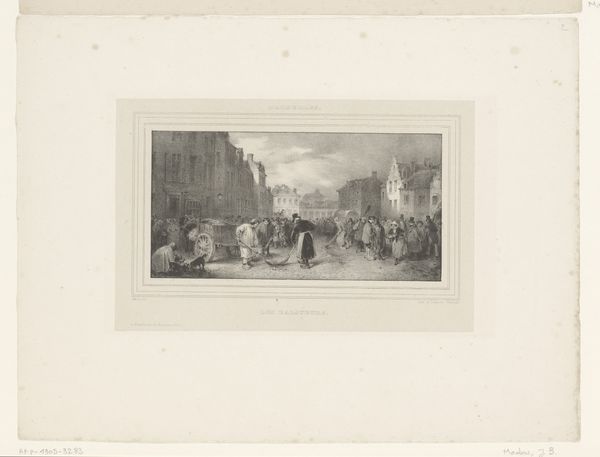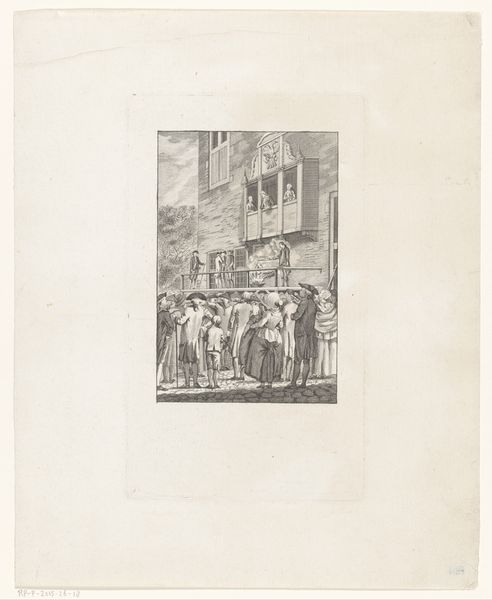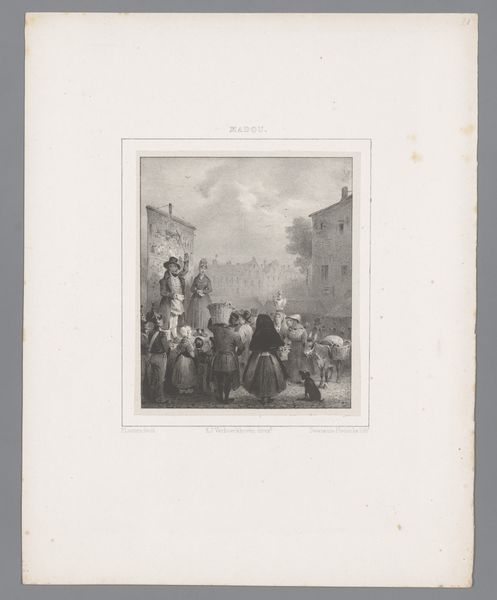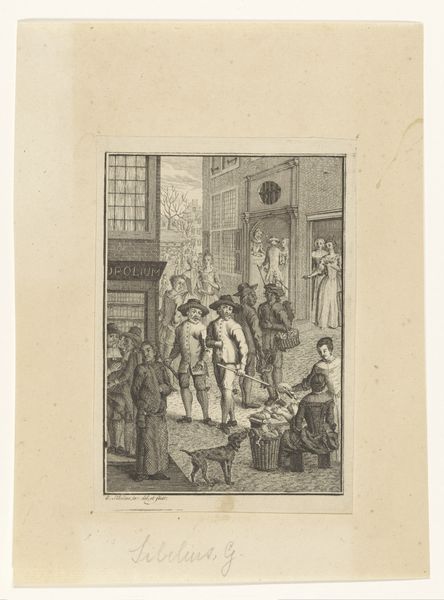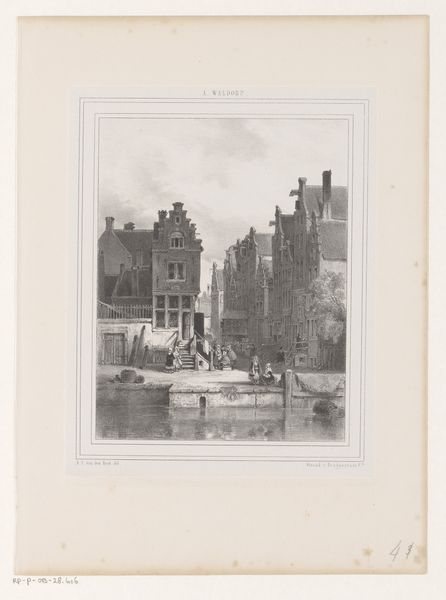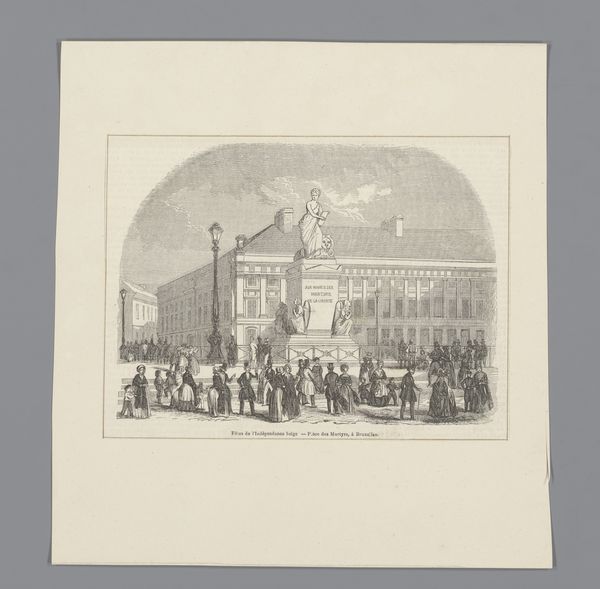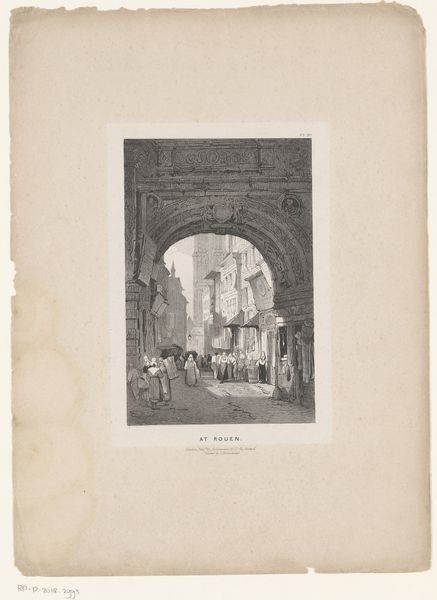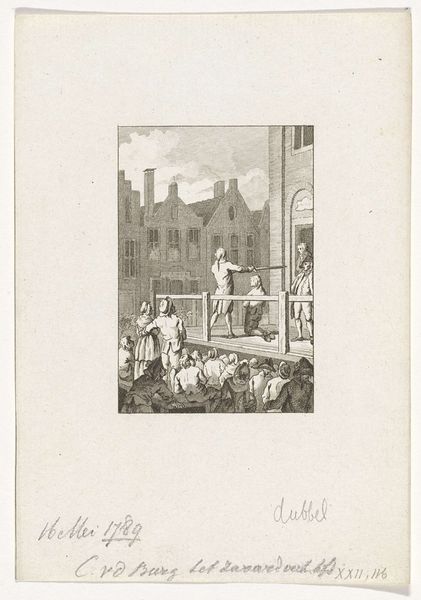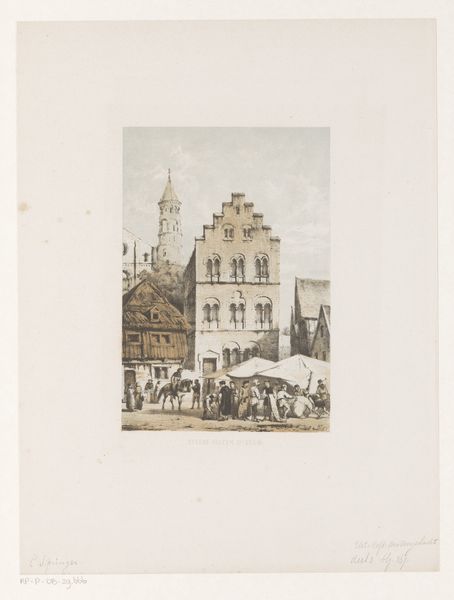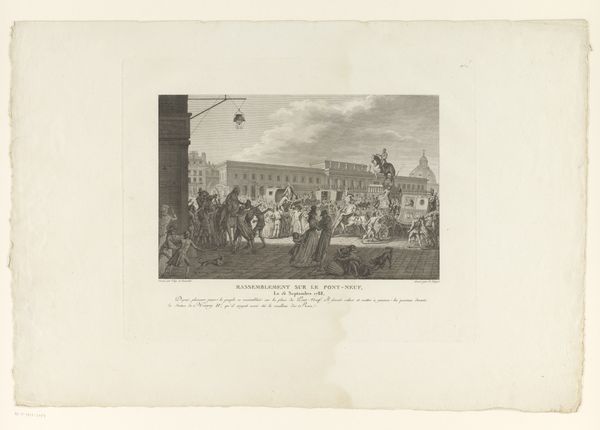
drawing, print, paper, pen
#
drawing
# print
#
landscape
#
figuration
#
paper
#
romanticism
#
pen
#
cityscape
#
genre-painting
#
realism
Dimensions: height 379 mm, width 278 mm
Copyright: Rijks Museum: Open Domain
Editor: This is "Kleding wassende vrouwen in Straatsburg," or "Women Washing Clothes in Strasbourg," created between 1833 and 1834 by Samuel Prout. It’s a print on paper using pen and other drawing techniques. I’m struck by the contrast between the detailed architecture and the more rough depiction of the women at work. What stands out to you? Curator: What interests me is the labor on display. The print emphasizes the communal act of laundry, a necessary and physically demanding task. Prout presents this through the meticulous process of printmaking, thereby elevating a mundane activity. How does this juxtaposition affect your perception? Editor: It makes me think about the artist’s choices. Why highlight this specific labor? Is it social commentary or just observation? Curator: Perhaps it's both. Consider the time. The piece gives a snapshot of urban life amid industrial shifts. Prout draws attention to the persistence of traditional practices. How the laundry is being done and how they are drawing the water is a laboring intensive job. Also, it makes one wonder how they negotiated with the use of shared resources. The city looks as if it looms above the workers, an ever constant witness. Is Prout celebrating or lamenting this reality through his detailed depiction of the material conditions of their work? Editor: So the very act of creating this detailed print forces us to think about the materials, the labor of the women washing, and Prout's own artistic labor? Curator: Precisely. By translating their work into art, he transforms a fleeting moment of production into something permanent, urging reflection on the lives behind it. It captures not just the scene, but the social fabric woven by work. It speaks to the consumption and class system by presenting an unvarnished version of daily routines. It isn't beautiful in the typical Romanticism way, yet holds value due to the artistic representation. Editor: That makes me appreciate the layers of meaning in this seemingly simple scene. I never would have considered how much the process itself speaks to the subject. Curator: Seeing art through its materials and the work it depicts, or rather captures, adds depth and makes connections beyond just the surface image.
Comments
No comments
Be the first to comment and join the conversation on the ultimate creative platform.
